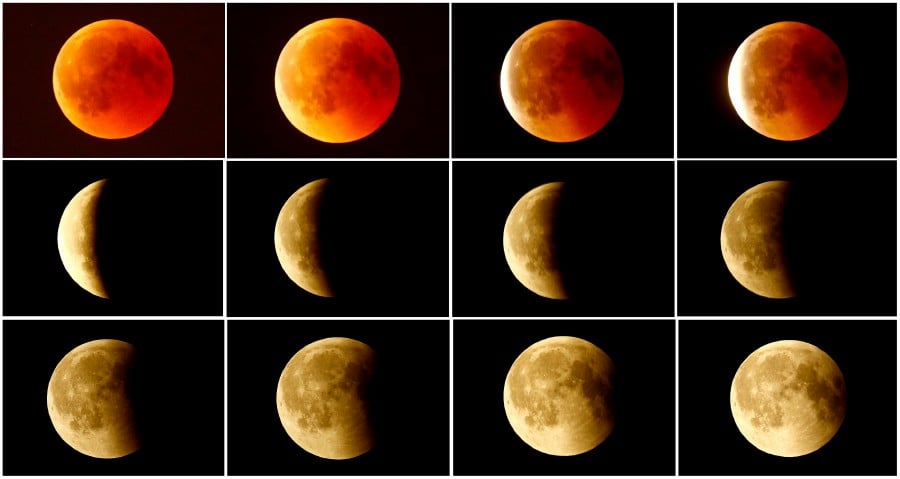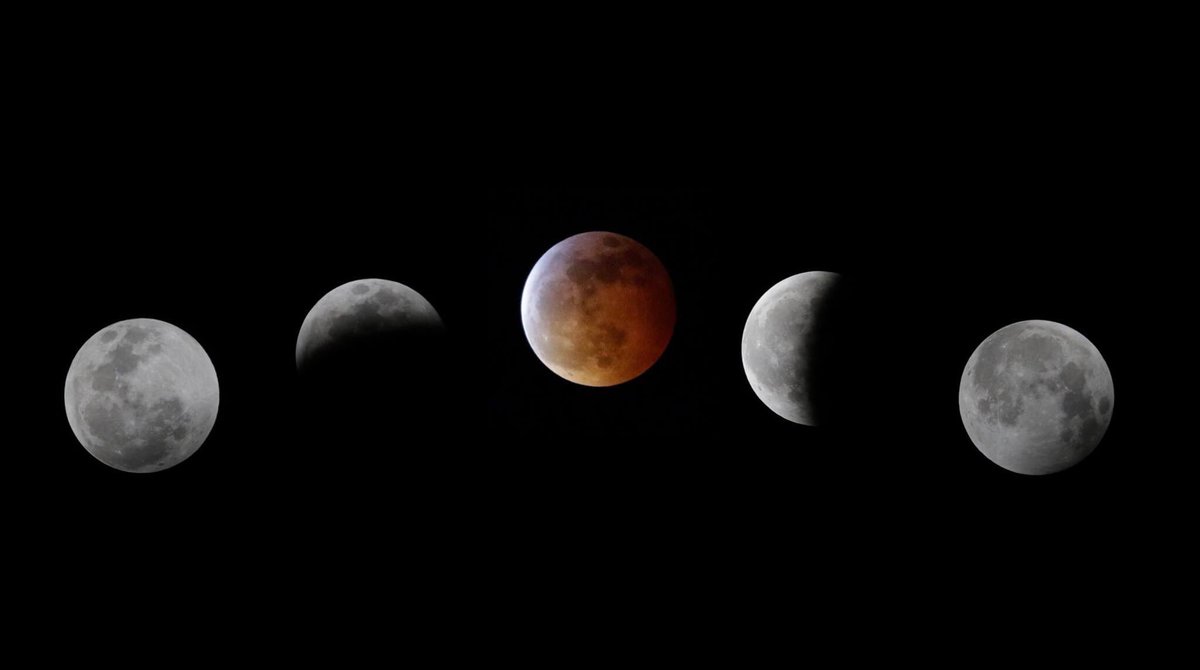Sunday night saw perhaps one of the most impressively-titled celestial events. The super blood wolf moon total lunar eclipse, or super blood great spirit total lunar eclipse, was the combination of a larger moon than normal and a total lunar eclipse, with the “blood” referencing its reddish colour as it passes over the night sky. Despite the trickiness of getting a decent photo, camera-ready lunar fans managed to snap some impressive images of the moon. The multitude of events occurring at once makes this exceptionally rare. A “super moon,” which occurs once in every four full moons, is one that’s bigger and brighter than normal. A total lunar eclipse only takes place around 5.6 per cent of full moons, which means that this moon only happens around 1.4 per cent of the time there’s a full moon. At around 10:34 p.m. Eastern time on Sunday, the Earth started to move between the sun and the moon to form a total lunar eclipse, casting a shadow over the moon. The moon had a reddish glow due to the light from the sun passing through the atmosphere and just about touching the moon, filtering out shorter wavelengths. At around 11:41 p.m., the eclipse reached totality.“The total phase on this one lasts 62 minutes, which is pretty good,” Rice University astronomer Patrick M. Hartigan, PhD told Inverse prior to the event. “The maximum is something like 106 minutes as I recall.”Capturing the moon with a photo requires careful planning. Users normally need a tripod to hold the camera, as the small amounts of light will mean using slower shutter speed to register more photons onto the sensor. Using a slower shutter speed can smear images due to camera wobble, something a tripod can reduce. More advanced users can take advantage of a remote to control the shutter, reducing wobble even further, and a telescopic lens to zoom in closer on the moon.






